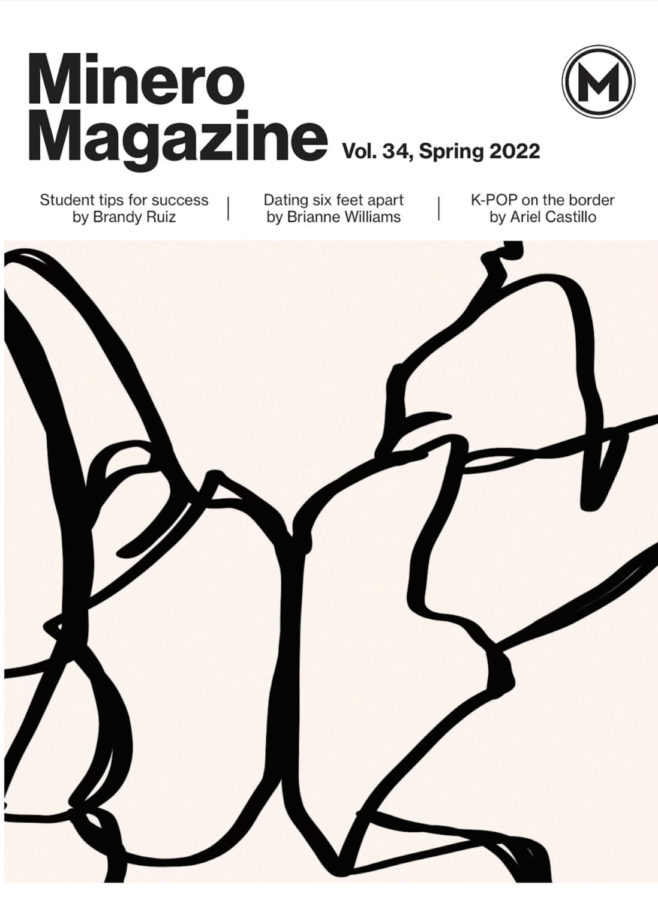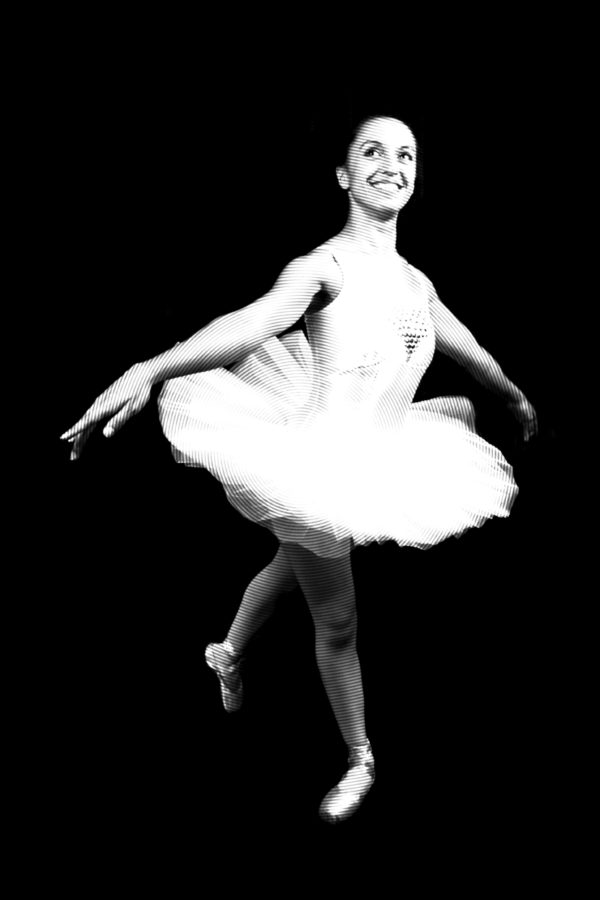By Alejandro Alba
With every step and turn of the performance, elegance, passion and delicacy must be carried through when presenting the venerable and established art of ballet. Dating back to the 15th century, ballet has allowed many dancers such as Megan Aizpuro, junior dance major at UTEP, to rise above the human condition by creating beauty within a dance routine.
“For me, ballet has a center, a calm place where you can express yourself with structure. While everything is out of place up in my mind, my body gives me the opportunity to keep it all together through ballet,” Megan says.
For many dancers, skill, dedication and practice are the basic factors that can lead to the successful performance of a routine. When it comes to ballet, a higher level of passion, devotion and talent is necessary to perform the delicate dance. “Everything you do comes from ballet, it’s your foundation,” Megan says. “If you want to do any other dance, you must understand ballet first.”
Lisa Smith, professor of dance at UTEP, believes that ballet is essential to any dancer’s career, for it is through its practice that a dancer acquires what is necessary to carry out any dance routine. “People who study ballet need to have respect toward the foundations. It has always been known for dedication and hard work, it is a highly developed art form,” Smith says. “With ballet it is necessary to begin studying quite early. Once the student begins studying ballet, the body begins developing correctly and kids begin learning the technique well. It instills the dedication and discipline–and that is required to do any dance.”
Nonetheless, while dancers understand that ballet is the foundation of dance, it may not necessarily be for everyone. “Ballet has always been a way of disciplining myself, ever since I was 4 years old, but it isn’t my focus in dance,” says Ana Nieto, junior dance major at UTEP. “It has been extremely important for me to carry out ballet throughout my dance career, yet there was a time where I realized that ballet was not for me for various reasons.”
Passionate about contemporary dance, Ana drifted away from ballet because she never felt like she fit in with that discipline. With contemporary dance, Ana says she is able to defy the rules of ballet while mixing different styles with the elegancy of the dance form. For her, nothing is more important than to portray emotions through her dance and she feels ballet would limit her level of body expression. Ana also became disinterested in ballet because of the body type and posture most ballerinas are expected to have at all times. Ana says she wouldn’t be able to carry the slim figure most ballerinas are expected to have.
Although Ana chooses not to commit and comply with the strict standards of ballet, she understands that she must keep practicing it in order to continue to develop as a contemporary dancer. “Just like any other passionate dancer, I keep devoting time to ballet since it teaches me a lot of technique to improve my contemporary dancing skills,” Ana says. “Ballet also allows me to build more strength and elasticity and that is very helpful to my body at all times.”
Megan has a different philosophy regarding the practice of ballet. Although she realizes that a certain type of body is required to do ballet professionally, she believes that any person can fully carry out the dance regardless of their body type.
“Sure, it is frustrating not having the ideal body for ballet, and I think you might always be self-conscious of your body structure due to certain positions and techniques, but I believe the slim figure most ballet dancers have is just used by companies for uniformity. It would be rather odd if you have a cast of 5’,6” and suddenly you see a 6’,1”,” Megan says. “Unfortunately, ballet does have a very small frame for body types. You also need to have a small torso and long legs, but just because you don’t have the body doesn’t mean you can’t do ballet. The technique can be practiced and mastered, regardless of your body type; you just need to have the motivation and devotion to the art.”
While striving to develop a specific body type, many dancers commit to rigorous training, rituals and diets in order to maintain stamina and healthy, performing bodies. Both Megan and Ana have certain rituals they follow in order to prepare their bodies to dance. Ana says her typical rituals involve not staying out late, eating right and not consuming any drugs or alcohol. “I have to take certain measures so my body can perform to its best. I do everything from drinking lots of water to sticking my feet in salt water so my feet, muscles and ligaments can heal,” Ana says. “But more than conditioning, I think you sacrifice more. A big sacrifice is time, you are always in rehearsal, and you have to be devoted if you are serious about dancing. It makes good college students since it disciplines you to be dedicated. You also learn how to push yourself–it helps you in other areas of your life.”
Megan’s rituals are similar, however, she struggles with smoking cigarettes. Through her work with Smith, Megan has learned to be healthy, but she has not been able to quit her smoking habit. “I think I might be a bit hypocritical since I throw myself out there as a dancer, yet I am here smoking. I have tried and I am trying to stop,” Megan says. “I really do try to treat my body like a temple in order to perform better.”
Megan does, however, condition her body by stretching, taking salt baths and consuming healthy foods as well as vitamins. After all, Megan says, ballet is not just her hobby, but her lifestyle and she must be healthy.
Dance, just like any art, is a career path with a busy agenda. Both Megan and Ana say they have no time for extra activities. Their day involves school, dance, teaching dance and sleeping. Ana says that people see her actions as sacrifices, but for her, the practice offers benefits in life and health.
Ana, who has danced for almost all of her life, says that she simply believes in doing what she likes and she has found her sanctuary of happiness in contemporary dance. Megan, however, has stayed with ballet and found her bliss. “I’ve been out of dance before and I will never do that again. I feel so cliché saying ‘I just want to dance,’ but I don’t think words can express what dance is to me–that is why I dance,” Megan says. “I express myself through it. When I move, I see impressions in other people and I think that is better than saying I just want to dance.”
EN BREVE
La pasión de una bailarina por la danza conlleva esfuerzo, disciplina, dedicación y sacrificio. Las bailarinas se enfrentan a diversos retos, llevando dietas rigurosas para mantener su figura y practicando varias horas diarias para perfeccionar su técnica y mejorar sus movimientos. Sin embargo, para la mayoría, el baile es algo más que un pasatiempo, es un estilo de vida y una forma de expresión.
Megan Aizpuro, estudiante de tercer año en UTEP, define el ballet clásico como la base principal de todo tipo de danza. Hoy en día, su mayor fuente de inspiración como bailarina proviene de su amor por el ballet, una forma de disciplina que le permite expresarse a través de su devoción a éste. “La técnica puede ser practicada y dominada independientemente de tu tipo de cuerpo; sólo se necesita que tengas la motivación y la entrega al arte”, dice Megan.
Sin embargo, muchas entienden que aunque el ballet clásico es la base principal del baile, éste no es necesariamente para todas. Ana Nieto, estudiante de tercer año en UTEP, admite que aunque el ballet clásico ha sido una parte importante de su formación como bailarina, ella prefiere la danza contemporánea, un estilo que reta las reglas rígidas y tradicionales del clásico. “El ballet clásico me ha ayudado a mantener mi fuerza y mi elasticidad, sin embargo, me di cuenta que no es para mí”, dice Ana.
Lisa Smith, profesora de danza en UTEP, asegura que lo importante es la dedicación y el esfuerzo que las bailarinas invierten en su práctica. “Ésta (la danza) siempre se ha conocido por la entrega y el trabajo duro que requiere; es una forma de arte bastante desarrollada”, dice Smith.



































